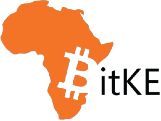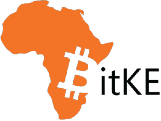The International Monetary Fund (IMF) has been a constant participant in African economic activities in its 80 years of existence.
While the organization was created in 1950, it only began operations 2 years later, and the first African country to access IMF resources was South Africa six years later in 1958.
According to a new 2024 compiled report, including SDR (Special Drawing Rights) credits, 48 African countries collectively owe USD 42.2 billion to the IMF. This is about one-third of the IMF’s total outstanding credit implying that the African continent is a major borrower of the IMF.
Over the period 1952 to 2023, the IMF made a total 1,529 loan commitments, of which around 40% (608 to be exact) were to African countries. In other words, on average, African countries together borrowed 10 loans a year from the IMF, within the global average of 23.
The typical African country accessed IMF resources an average of 12 times, slightly above the global average of 10 times. This equates to an average of one access every five years for African countries. However, from 1952 to 2023, Africa accounted for less than 10% of the IMF’s total commitments in terms of volume.
The average IMF loan to an African country was around USD 200 million, significantly lower than the global average of USD 887 million. In total, the typical African country has borrowed approximately USD 1.5 billion from the IMF, whereas other countries have borrowed an average of USD 8 billion.
Only three African countries—Botswana, Libya, and Eritrea—have never borrowed from the IMF. The top five African borrowers from the IMF, in terms of volume, are Egypt, Cote d’Ivoire, Ghana, Kenya, and Angola, which together account for over 40% of IMF lending to Africa.
The top borrowers in terms of frequency include:
- Liberia (24 times)
- Kenya (23 times)
- Morocco (22 times)
- Senegal (22 times)
- Mali (21 times)
- Madagascar (20 times)
In addition:
- Each of the top five borrowers – Egypt, Cote d’Ivoire, Ghana, Kenya, and Angola – received over $4 billion each, with
- Egypt receiving $15 billion
- Cote d’Ivoire and Ghana each receiving $4.3 billion, and
- Kenya and Angola each receiving $4.1 billion
- In contrast, the least borrowers – Eswatini, Guinea-Bissau, Djibouti, Cabo Verde, Comoros, and Sao Tome – each received less than $100 million
- The Central African Republic has the highest proportion of its external debt owed to the IMF, with the average amount owed exceeding that of any other African country
- 31 African countries had outstanding loans with the IMF while 18 former borrowers do not as of March 2024
- Kenya has the largest outstanding credit to the IMF at over $2 billion as of March 2024
You can access the full compilation of the report by sending an email request to info@bitcoinke.io.
___________________________________________











